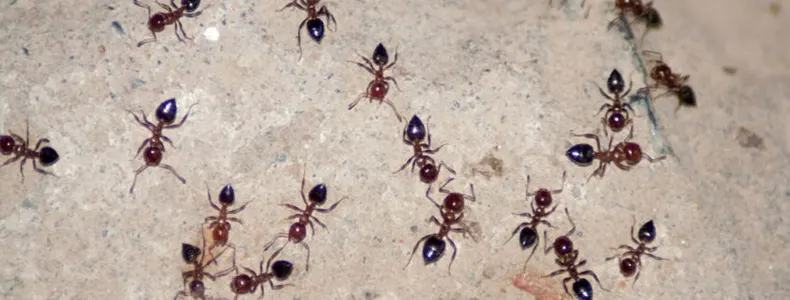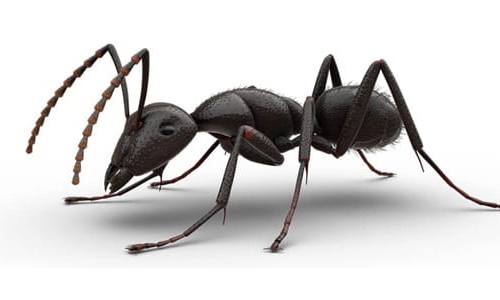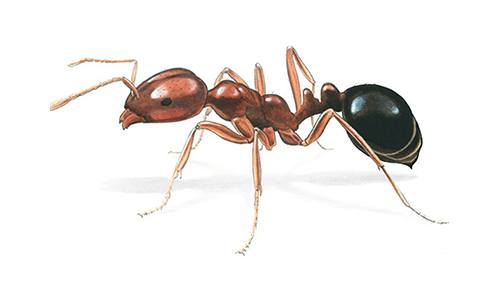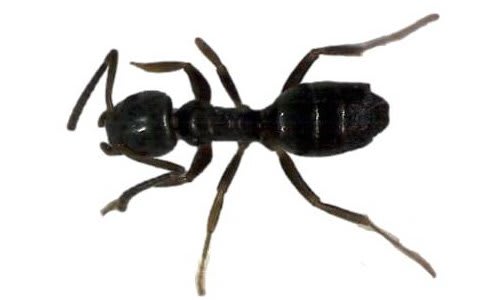
How to Get Rid of Ants in the House | Ant Control Inside
If you have ants inside your home, follow these ant control tips to eliminate them.
December 16th, 2023
How to Get Rid of Ants in the Home
To get rid of ants indoors, try using high-quality, professional ant baits or non-repellent pesticides. If you use ant baits, you'll need to take the extra step of tracking down ant activity and trails. Non-repellent pesticides are often a more convenient way to control ants indoors.
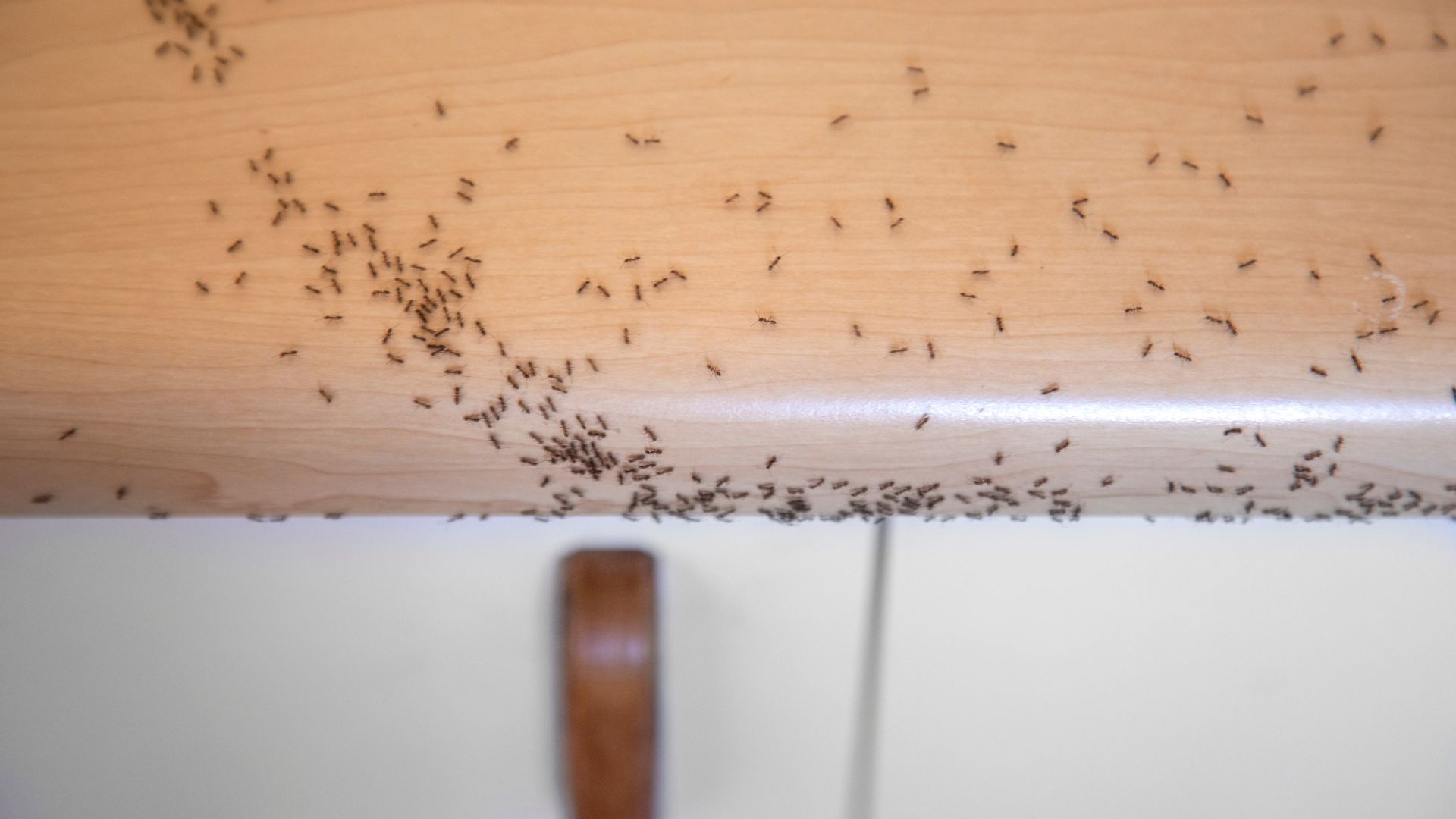
How to Get Rid of Ants in the Kitchen
It's no surprise that ants gravitate towards the kitchen when food is on their minds. Kitchens are a hotspot for ant infestations because of the number of food options available.
If you want to get rid of ants in the kitchen, the first thing you should ensure is that the room is clean, tidy, and free of any spills.
Remove any unclean dishes or uncovered food on countertops, in the sink, or in the cupboard.
Foods That Attract Ants
Foods that are rich in sugar and carbohydrates attract ants inside. To get rid of ants in the house, keep foods like honey, sugar, and bread in sealed containers or plastic bags.
Seal all pet food that is not currently being used in airtight containers. This will cut off the ants’ food supply.
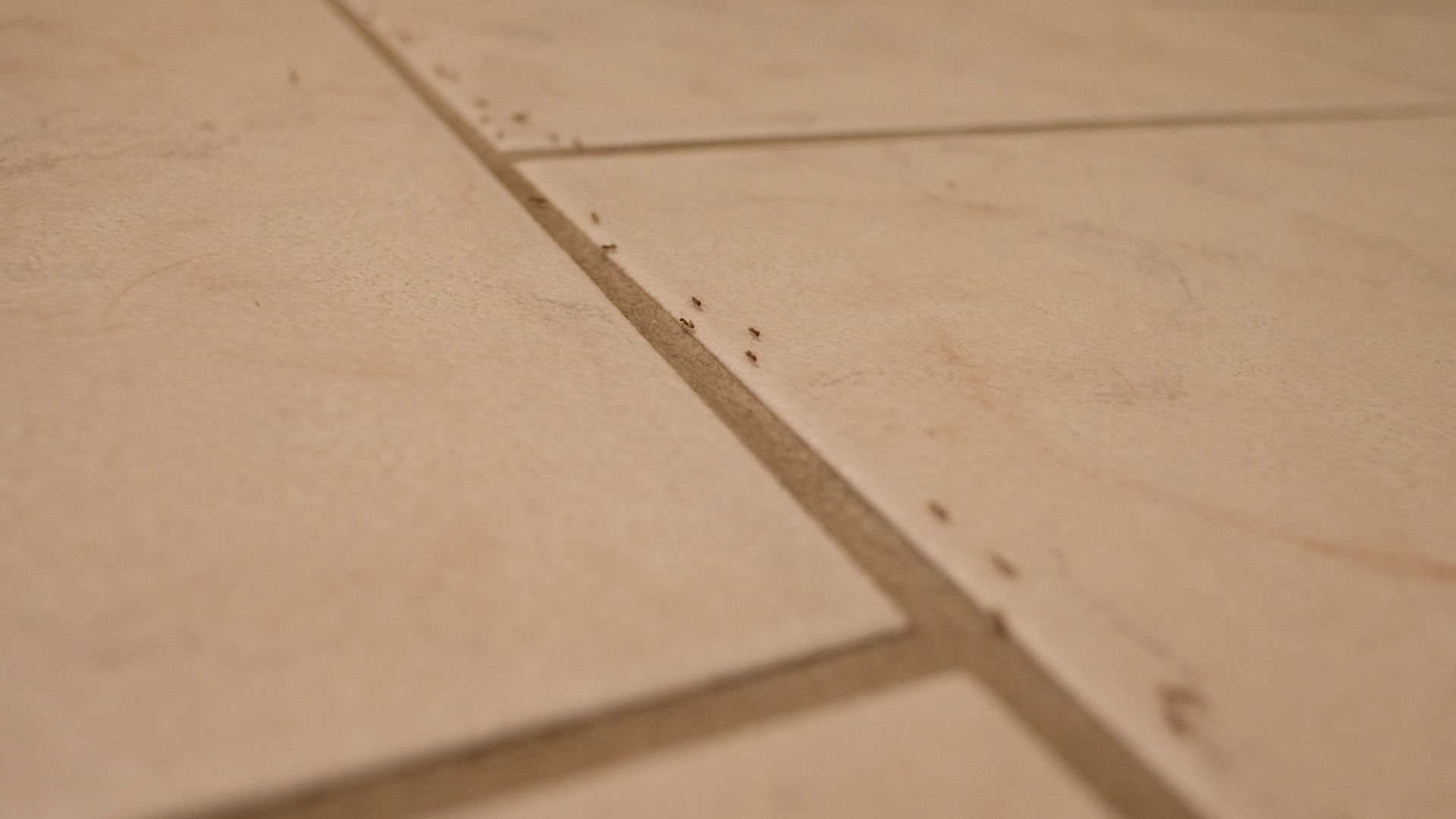
Best Indoor Ant Killers | Top Methods To Get Rid of Ants Inside
1. Ant Baits:
Ant baits are a very effective method of ant control. When used correctly, they are safe to use around dogs and children. Ant baits are available in the form of gels, granules, or stations.
Differences in Ant Baits
The active ingredients in baits are typically sugar-based or protein/grease-based. Some ants may prefer sugar, while other ants prefer protein or grease.
Different from ant traps, where the ants become stuck, ants feed on the bait and take pieces of the poison back to the queen, killing the whole colony.
You can combine Spectre PS Aerosol or another non-repellent insecticide, such as Navigator SC, with your baiting program to efficiently eliminate ants.We highly recommend Terro Liquid Ant Baits, such as Terro PCO Liquid Ant Bait.
While ant traps do kill ants, they do not have the benefit of destroying the entire colony. Baits can more effectively kill all the ants in an entire colony.
Follow these tips to get rid of ants in the house using ant bait:
-
Place the ant bait in areas where trails are present so the ants can find the bait and take it back to the colony.
-
Do not use a residual repellent insecticide near bait placements. The best ant spray for indoors is a non-repellent insecticide.
-
It is recommended to apply both a sweet-based bait and a protein-based bait combination so that you attract ants with a wide range of tastes.
2. Non-Repellent Insecticides:
Another method to get rid of ants in the house is the use of non-repellent insecticides. Non-repellent insecticides avoid scattering the ants and creating a bigger problem.
Ants walk across over the sprayed area (instead of avoiding it) like repellent insecticides. If you want to learn how to kill ants in the house quickly, this indoor ant killer is an excellent option.
Stop An Ant Infestation With Non-Repellent Insecticides
Follow these tips to get rid of ants in the house using non-repellent insecticide sprays:
-
Navigator SC Concentrate is a non-repellent insecticide, but can not be applied inside, just outside the perimeter.
-
Spectre PS Aerosol is an aerosol with a crack and crevice tip to reach hard-to-reach areas that may be used inside.
-
Many people are successful with just the exterior perimeter treatment with Navigator SC alone, catching the ants as they come and go, without the use of any pest management products inside.
-
The Non Repellent Ant Kit, includes both Navigator SC and Spectre PS in a bundle kit to treat your ant problem in-house.
Key Takeaway
Always use ant bait or non-repellent insecticide to kill ants indoors. You may be able to stop your ants from coming inside by just using an indoor ant killer around the perimeter outside using Navigator SC.
If these pesky insects are still appearing inside, consider calling an ant pest control service to professionally treat your home and get rid of the ants permanently.
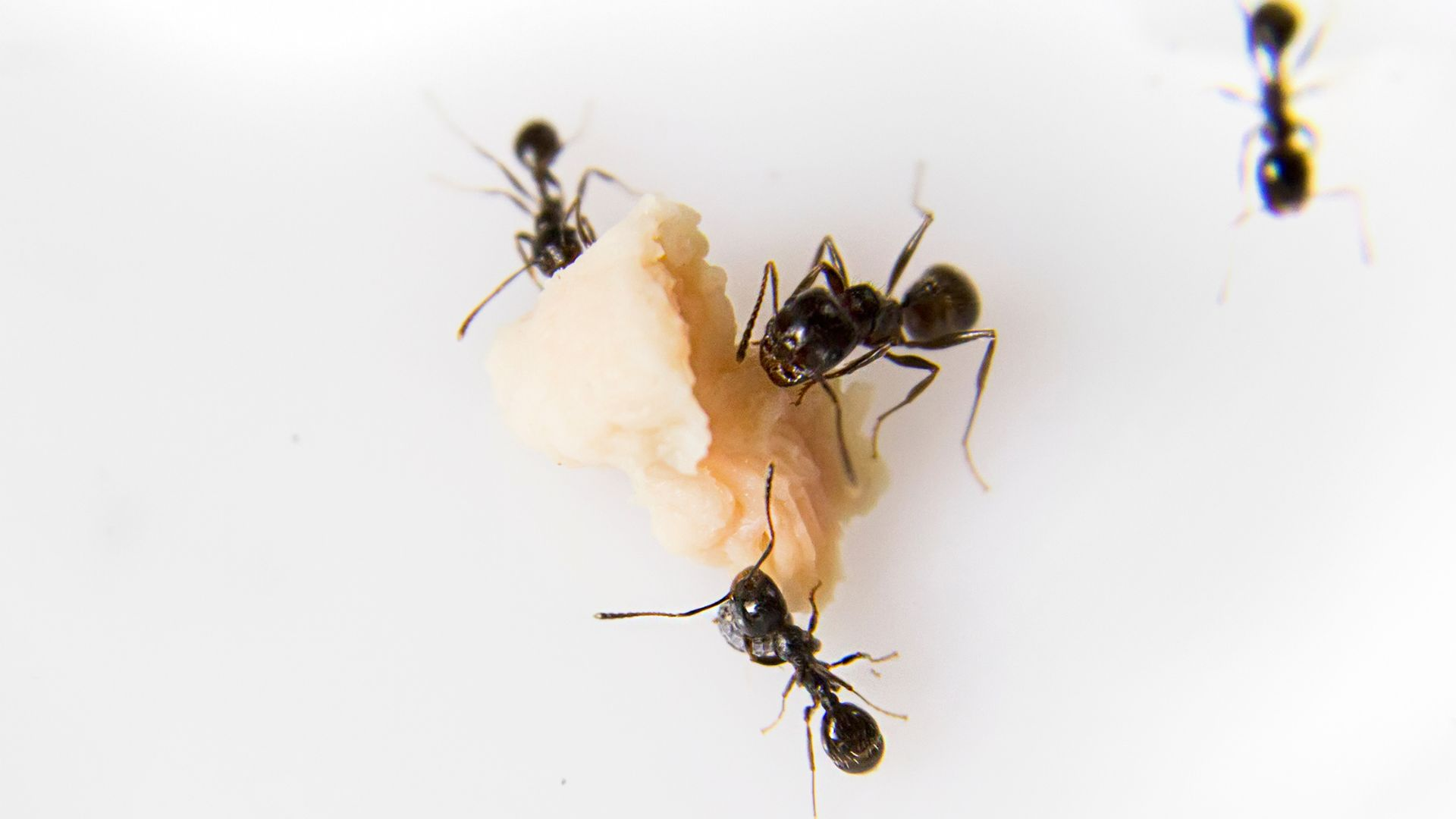
Identify
Ant Species Inside the House
An ant infestation can occur all year round, especially in warmer climates. In hotter temperatures, ant nests make their way inside the home in search for food or water.
Most Common Ants Inside
The most common ant species to live inside the home include Argentine Ants, Crazy Ants, Odorous House Ants, and Pavement Ants. Other ants you may find are Pharaoh Ants, Thief Ants, and Carpenter Ants.
The most common ant species to infest homes are odorous house ants. Because they do not spread disease or cause significant damage to your home, these ants are considered a nuisance pest.
The Carpenter Ant
Conversely, carpenter ants are far more destructive and commonly find their way inside homes. Carpenter ants tunnel through rotten or damp wood when they get inside, causing significant damage to windows, doors, and even structural framework.
Different Ant Behavior
Each ant species has its own set of behaviors. If you want to learn how to eradicate ants in the house, it is important that you understand these patterns.
This will enable you to correctly identify the type of ant infestation you're dealing with and determine the appropriate pest management strategy. If you’re unsure what ant species you have, give us a call.
Ant Appearance
Ants have segmented, elbowed antennae. These segments connect the abdomen with the thorax. The ants have a slender, withered appearance due to the abdominal pedicel. The pedicel may be divided into one or two sections.
These components have been enlarged and take on a range of shapes, from a flattened plate-like shape to a slight hump.
Odorous House Ants
Odorous house ants and carpenter ants are most common inside of homes. Because these ants are small enough to find shelter almost anywhere, ant colonies commonly form inside of warm, cozy homes through entry points.
You may also see worker ants around your garden, deck, or on the siding of homes.
Fire Ants
Fire ants are more often found outdoors. The only instances where you'll find fire ants indoors are if rain has flooded their outdoor colony mound or if the weather is overly hot and dry. You most likely will not come across fire ants indoors.
Characteristics of Common Inside Ants
-
Odorous House Ants: 1/8 inch long, light brown or black bodies
-
Carpenter Ants: 1/4 to 1/2 inch long, dark brown or black bodies
-
Pavement Ants: 2.5 to 4 mm long, brown or black bodies
-
Argentine Ants: 2.2 to 2.8 mm long, light or dark brown bodies
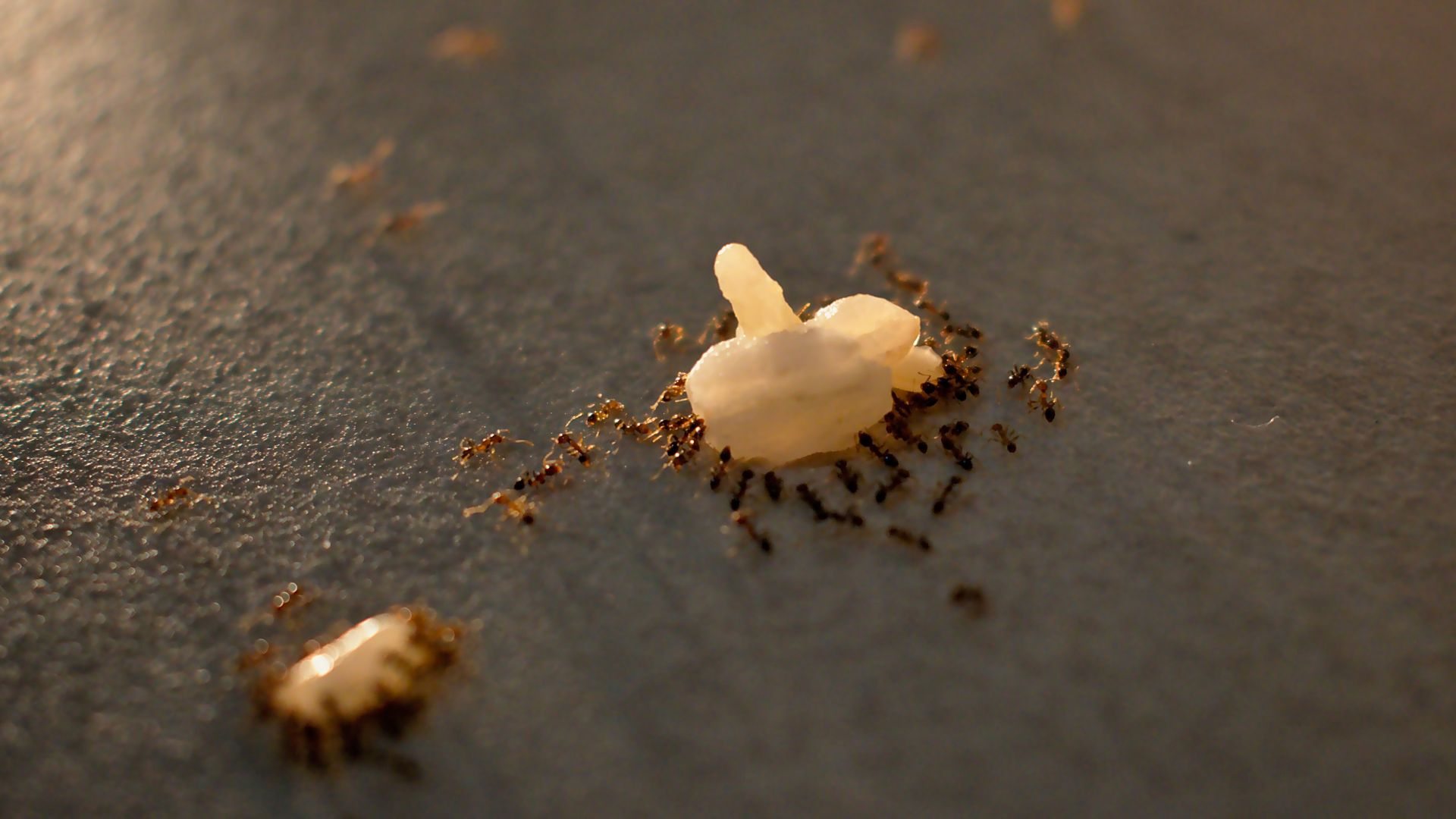
Inspect
Killing Ants Indoors with Proper Inspection
If you want to get rid of ants inside your house quickly, always start with a thorough inspection both inside and outside. Most indoor ants establish a core colony outside and create satellite nests near a food source inside.
Inspecting Inside
So if you see ants inside the home, follow the trail to its nest and watch where the ant goes after reaching the food source.
Inside, ant colonies are typically found near entry points into the home. Inspect all carpet edges, doors, windows, and areas of the kitchen.
Inspecting Outside
You should also consider checking any outside vinyl siding or exterior masonry and identifying any outdoor colonies. Outdoor inspection is a vital step in effective ant pest management.
If you are targeting carpenter ants, you will be more successful at night since these ants are nocturnal.
Before they make their way inside, carpenter ants can be found foraging around outside in woodpiles, rotted or water-damaged wood, tree stumps, or emerging from damaged timber inside the house.
Determining the Ant Species
Your ant control method should be determined by the type of ant species that is causing your ant infestation. It can be very difficult to identify what type of ant you have without a magnifying glass, so try using one to inspect ant trails and nests.
-
Inspect for ants at different times of the day. Some ant species will be more active in the morning, while others may be easier to spot at night.
-
Try adopting a magnifying glass into your inspection method. This way, you can easily distinguish between each ant species.
-
Follow the ant trails inside and identify any entry points into your home
-
Send us a photo or give us a call if you're not sure what kind of ant you have.
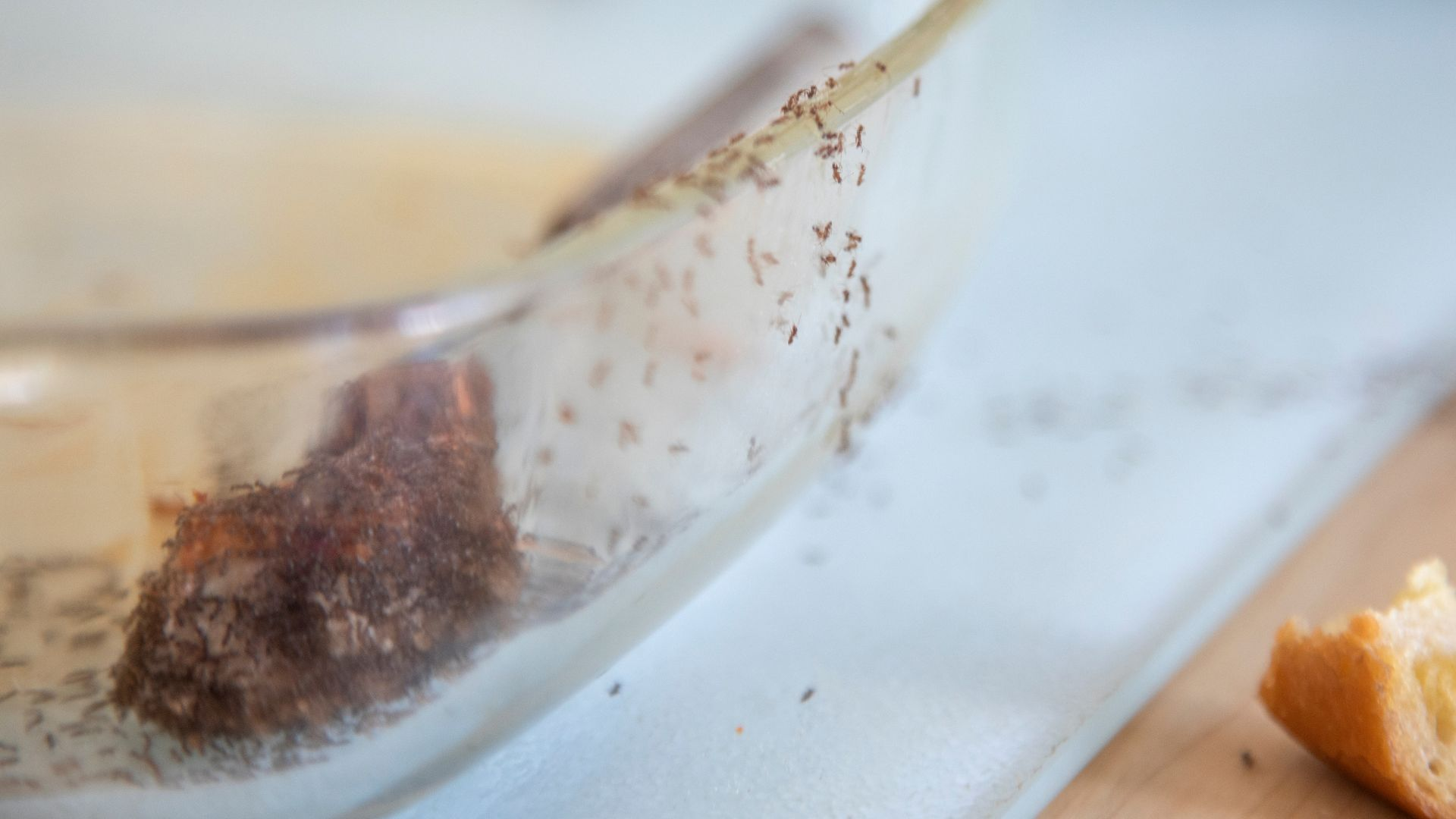
How to Prevent Ants from Entering Your Home
The first step to prevent ants from entering your home is to identify any entry points that the ants may be passing through and seal them off. Ants commonly enter the home through cracks in walls and holes in the floorboards, so be sure to check these areas.
Keep Your Home Clean and Tidy
Next, keep all surfaces clean, tidy, and free of any spills. Keep all sugary and starchy foods off countertops and in tightly-sealed containers. Dispose of any rubbish or overripe foods into a sealed garbage can on a regular basis.
Eliminate Ants With Natural Solutions
Deter Ants With Essential Oils
Repel ants naturally with a homemade mixture of tea tree oil and water diluted in a spray bottle.
You can also make your own solution at home to repel ants and keep them out. Try mixing a few drops of essential oil or lemon juice into water and spray directly onto any ant trails and along carpet edges, doorways, and windows.
This natural insect repellent will deter ants and also serve as a natural ant killer.
Cayenne Pepper and Cinnamon Ant Repellent
Cayenne pepper and cinnamon are also effective at repelling ants because they hate the strong smell. Try sprinkling this inside and outside in your garden, deck, or patio to prevent them from entering your home.
You can also combine it in a spray bottle with drops of essential oil to boost the strong smell.
Kill Ants With Boric Acid
Boric acid is another highly powerful ant killer. However, boric acid is toxic to children and pets, so please be careful using this inside of your home.
Simply mix 1/2 teaspoon of boric acid with 1 cup of water in a bowl. Soak cotton balls into the solution and apply a light layer over any ant trials or entry points inside.
How to Get Rid Of Ants Inside
If you ants inside your home, follow these ant control tips to eliminate them
Indoor ant colonization occurs year-round, especially in warmer climates. Ants that live in homes include Argentine Ants, Crazy Ants, Odorous House Ants, Pavement Ants, Pharaoh Ants, Thief Ants, and Carpenter Ants. All of these ants may come inside looking for food or water.
The top methods of getting rid of ants inside are using high-quality, professional ant baits or insecticides classified as non-repellents. If you choose ant baits, you will need the extra step of locating the ant activity and trails. Many times, using non-repellent insecticides are easier method for ant control inside.
( 2 ) Top Methods To Get Rid of Ants Inside
1. Ant Baits:
Ant Baits are a very successful method of controlling ants. They are safe to use around pets and children when you follow directions. Ant baits come in gels, granules, or stations. The active ingredients in these baits may be sugar-based or protein/grease-based, to lure a variety of ant species and target their dietary needs.(Ant Bait Placements)
An effective ant control method is the use of high quality professional ant baits. Ants feed on the bait and take pieces back to the queen, killing the whole colony. With proper bait choices and bait placement, the whole ant nest may be eliminated. Ant baits come in gels, granules, or stations. The active ingredients in these baits may be sugar-based or protein/grease-based, to lure a variety of ant species and target their dietary needs. You can combine Spectre PS Aerosol or another non-repellent insecticide such as Navigator SC with your baiting program.
(Follow these Ant Bait Tips)
- Bait in areas of ant activity or trails so the ants can find the bait and take it back to the colony.
- Do not use a residual repellent insecticide near bait placements (a non-repellent insecticide is fine).
- It is recommended to apply both a sweet-based bait and a greasy/protein-based bait combination in order to make sure the bait covers the entire range of dietary needs.
2. Non-Repellent Insecticides:
Another method of ant control inside, is the use of non-repellent insecticides. Non-repellent insecticides allow ants to cross over the sprayed area (instead of avoiding it) like repellent insecticides. Typical repellent insecticides may scatter the population, whereas a non-repellent insecticide works without the ants detecting its presence.- Navigator SC Concentrate is a non-repellent insecticide, but can not be applied inside, just outside perimeter.
- Phantom Aerosol II is an aerosol with a crack and crevice tip to reach hard-to-reach areas that may be used inside.
- Many people are successful with just the exterior perimeter treatment with Navigator SC alone, catching the ants as they come and go, without the use of any pest control products inside.
- The Non Repellent Ant Kit, includes both Navigator SC and Phantom Aerosol II at reduced savings.
- The No-Mix Indoor Ant Kit combines two non-repellent ant control products. This ant kit is a ready-to-use solution that combines a non-repellent insecticide (Doxem NXT) with a high-performance ant gel (Savitri Ant Gel) that has proven to be a very effective ant bait. The workers take the bait back to the queens and other workers.
(Ant Bait Placements)
An effective ant control method is the use of high quality professional Ant Baits . Ants feed on the bait and take pieces back to the queen, killing the whole colony. With proper bait choices and bait placement, the whole ant nest may be eliminated. Ant baits come in gels, granules, or stations. The active ingredients in these baits may be sugar-based or protein/grease-based, to lure a variety of ant species and target their dietary needs. You can combine Spectre PS Aerosol or another non-repellent insecticide with your baiting program.
Follow these Ant Bait Tips:
- Bait in areas of ant activity or trails so the ants can find the bait and take it back to the colony.
- Do not use a residual repellent insecticide near bait placements (a non-repellent insecticide is fine).
- It is recommended to apply both a sweet-based bait and a greasy/protein-based bait combination in order to make sure the bait covers the entire range of dietary needs.
1. Non-Repellent Ant Kit (For both inside and outside)
This kit is a perfect non-repellent ant kit. It contains Navigator SC for the perimeter treatment and Spectre PS Aerosol for cracks and crevices, inside.
2. Spray a Non-Repellent Insecticide
Use non-repellent insecticides such as Spectre PS Aerosol sprayed inside would be a better choice than repellent insecticides.
3. Dust The Ant Nest Directly
Spraying a residual repellent insecticide to control foraging workers may only provide short-term control only (unless you find and treat the nest and treat it with dust directly). For treating the ant nest directly, use high-quality residual dust, such as D-Fense Dust. This ant control method would be the least effective because you may not find the nest.
Key Takeaway
Always use baits or non-repellent insecticides to control ants indoors. This will avoid scattering the ants, creating a worse problem. You may be able to stop your ants from coming inside by just spraying the perimeter outside using Navigator SC
Popular Ant Combination Kits for Inside Ant Control
Written by our resident pest control expert Ken Martin.




